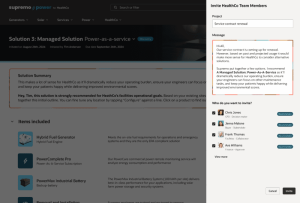HTTP codes received much attention in 2016, most notably from tech leaders at Google. The search giant’s attempt to migrate the internet from HTTP to HTTPS has actually changed HTTP redirects impact on SEO ranking.
Website migration and performance upgrades no longer have the same impact on PageRank. In fact, in some cases, redirects are only a formality.
Today we’re looking at Google’s new HTTP standards, but first, let’s refresh ourselves on traditional HTTP redirect practices.
HTTP Codes And Redirects: Their Original Application
HTTP stands for hypertext transfer protocol. The protocol in question facilitates communication between different systems. In this case, transferring data between a web server and web browser.
The five different classes of redirects are as follows:
- 100. The 100 redirect indicates that your browser requested a server, but that request is still processing.
- 200. This 200 status code is what you want to see. These codes indicate the server received your browser’s request and processed it successfully.
- 300. 300 redirects appear when the server tells your browser the requested page has either temporarily or permanently moved. Your originally requested resource is no longer available.
- 400. These codes indicate a problem with your resource request.
- 500. The 500 code appears when your browser requests access a specific resource and is successful, but the server cannot deliver the website in question.
So How Do These Codes Affect SEO?
Let’s break down how each codes affects your digital marketing.
200 Successful
The 200 code, as mentioned before, means everything is operational. Your browser was able to request the resource which the server was then able to deliver.
Webmasters look for as many 200 codes as possible when running technical audits.
301 Permanent Redirect
The 301 redirect appears when your requested resource is reassigned. This happens when a site has migrated, or pages have been moved, URLs been renamed, or content has been consolidated.
Typically a permanent redirect signals to search engines to bring over all ranking information for the old URL to the new URL.
302 Redirection
302 redirection occurs when the server finds your resource request, but the page exists in a different location. Requests still use the original resource location.
A 302 redirect traditionally tells Google that your page has been temporarily moved to a new location. Traditionally technical SEO holds that temporary redirects do not bring over ranking information of the old location to the new the way a 301 Permanent Redirect would. While this is technically correct, Google, in time, tends to treat a temporary redirect as a permanent one, including all its benefits.
400 Bad Request
The 400 status code returns when your resource request has an invalid syntax. This can happen for reasons including:
- Corrupt cookies associated with the site in question.
- Invalid requests due to a bad browser.
- Invalid requests due to human error.
401 Unauthorized
This request appears when the you’re attempting to access a website without proper credentials. These protected resources require a username and password.
If this is intended, if this is part of your marketing strategy, no harm is done. If this happens accidently, and now all or parts of your content are hidden behind a login, that’s of course not a good thing.
404 Not Found
404 status codes appear when you’re able to communicate with the server, but cannot find the requested resource.
“Not Found” pages are not a technical SEO problem; they’re not a source of (de)ranking or a penalty cause:

500 Internal Server Error
This code appears when the server cannot process your resource request. These are common errors often due to server misconfiguration.
Malformed .htaccess files and missing packages from a PHP file executed incorrectly are frequent suspects.
Internal Server Errors can have a very strong, negative impact on your SEO, especially if the situation goes undetected for a while. Occasional errors aren’t an issue; things happen. But if the situation is more or less permanent, when pages that should be served aren’t shown because the webserver sending the pages experiences an error when it tries to show the page, your SEO is of course impacted.
502 Bad Gateway
This HTTP code informs you that one server received a bad response from another server. Usually you have no technical control over this situation and usually the situation will resolve itself.
Sometimes the issue is caused by you or your network; your browser thinks there’s something wrong. This is a problem with your browser and/or the network at your home.
SEO impact is negligible.
503 Service Unavailable
The 503 HTTP code indicates that the server responsible for processing your request is temporarily unavailable. It’s like a “404 Not Found” for a complete computer instead of just a page.
Usually the computer, the server, is too buys, is undergoing maintenance, or has issues with inadequate memory or CPU power.
Temporary 503 notices are not a problem and are, in fact, the preferred status code by search engines when your server is temporarily unavailable. Lasting 503 notices can result in URL’s being removed from a search engine’s index and thus have a severe affect on you SEO.
504 Gateway Timeout
A server didn’t get a timely response from another server while trying to send you the page you requested. Usually this server isn’t under your control, so there’s not a lot you can do. If the situation happens frequently, check with your technical staff; sometimes heavy traffic or corrupt databases can cause this same error to show. In that case, the SEO impact could be noticeable .
Now That We Know What’s Bad, How Do We Identify The Issues?
Finding the specific issue with your redirects falls to third party software designed specifically for identifying status codes at scale. Some of our favorites:
- A1 Website Analyzer: Industry-strength crawler for serious crawls, no matter the size of a site.
- Screaming Frog: This spider finds all of the URLs belonging to your domain, making it easy to separate code by URL.
- Deep Crawl: Deep crawl works just like Screaming Frog, expect on cloud based software and with the ability to better handle large domains.
- Link Redirect Trace: Link Redirect Trace is a browser extension that monitors for HTTP codes on the fly.
- Google Search Console: Search console is excellent to identify exactly what Google sees. Check the Crawl > Crawl Error reports to find URLs Google isn’t understanding.
Keeping An Eye On Your Site
- Consistently Audit Your URLs: Use the programs listed above to audit your site on a regular basis. Catch issues before they can hurt your SEO.
- Fix Common Issues: Check if the errors you see are expected. Is this temporary? Does it happen frequently?
- Site Migrations: Preferably use page level 301 Permanent Redirects.
HTTP Status Codes & Technical SEO
The post HTTP Status Codes & Technical SEO appeared first on Search Engine People Blog.
Search Engine People Blog(41)
Report Post





